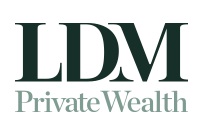Choosing the right financing option for your business can be difficult; you have to consider your assets, cash flow, time in business and business goals. Learn about secured and unsecured loans to help you decide which one suits best.
What’s the difference between secured and unsecured loans?
The main difference between a secured loan and an unsecured loan is whether the lender requires security.
A secured loan for your business requires security. This may be property, inventory, accounts receivables or other assets. If the loan can’t be met, the lender may rely upon these assets to clear the outstanding balance, interest or fees.
An unsecured loan for your business doesn’t require physical assets (such as property, vehicles or inventory) as security. Instead, your lender will often look at the strength and cash flow of your business as security.
What is a secured loan?
Secured loans:
-
allow you to borrow against your assets, e.g. property, inventory, accounts receivables
-
generally involve a longer approval process, as there’s security to consider
-
may require value assessments and additional proof and documentation of assets
-
commonly offer lower interest rates and higher borrowing amounts than a secured loan.
It’s important to remember though, that the amount a bank will loan isn’t one-to-one with an asset’s value. For example, putting forward a $50k vehicle as security won’t result in a $50k loan.
What is an unsecured loan?
Unsecured loans:
-
often use the strength of your cash flow as security, instead of physical assets
-
are generally for smaller amounts ($100k or less)
-
may be approved quickly, as less upfront information is required
-
are a bigger risk for lenders, as there’s no collateral for security
-
tend to have a higher interest rate than secured loans, as they’re deemed higher risk.
Which business lending option works best for you?
As with many decisions, the right one depends on your individual circumstances. A good starting point is to decide what your business goals are and the time frame in which you want to achieve them.
The faster process of unsecured lending may make it more suitable to businesses growing rapidly or requiring quick access to funds. A secured loan may suit a business wanting a larger amount of money they can pay back over a longer period, and generally at a lower interest rate.
How to set up a business loan
Once you’re clear on what you want to achieve, we can talk you through which borrowing option may work best for your business.
If you already know that you want an unsecured lending option, speak to your bank about financing.
To find out more speak to us today.
Source: NAB
Reproduced with permission of National Australia Bank (‘NAB’). This article was originally published at https://www.nab.com.au/business/small-business/moments/starting-out/choose-finance/secured-unsecured
National Australia Bank Limited. ABN 12 004 044 937 AFSL and Australian Credit Licence 230686. The information contained in this article is intended to be of a general nature only. Any advice contained in this article has been prepared without taking into account your objectives, financial situation or needs. Before acting on any advice on this website, NAB recommends that you consider whether it is appropriate for your circumstances.
© 2023 National Australia Bank Limited (“NAB”). All rights reserved.
Important:
Any information provided by the author detailed above is separate and external to our business and our Licensee. Neither our business nor our Licensee takes any responsibility for any action or any service provided by the author. Any links have been provided with permission for information purposes only and will take you to external websites, which are not connected to our company in any way. Note: Our company does not endorse and is not responsible for the accuracy of the contents/information contained within the linked site(s) accessible from this page.



